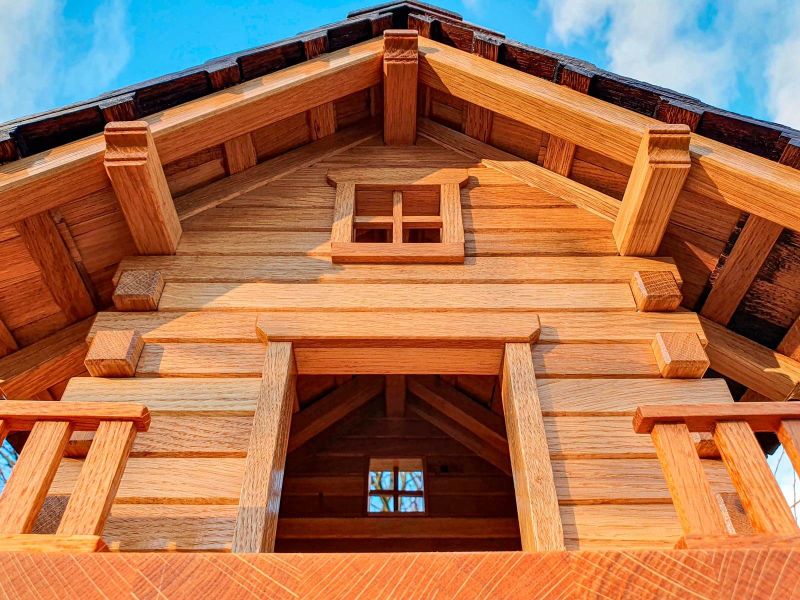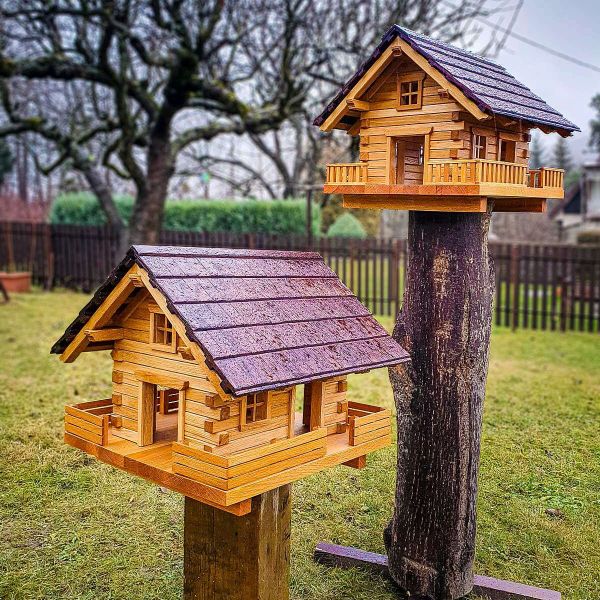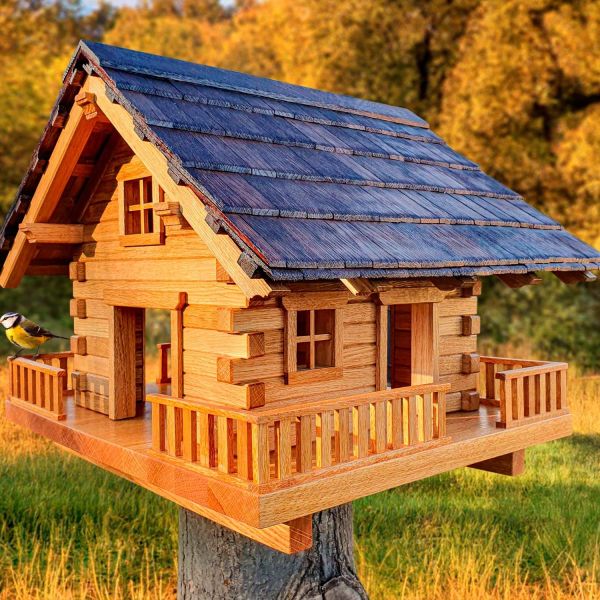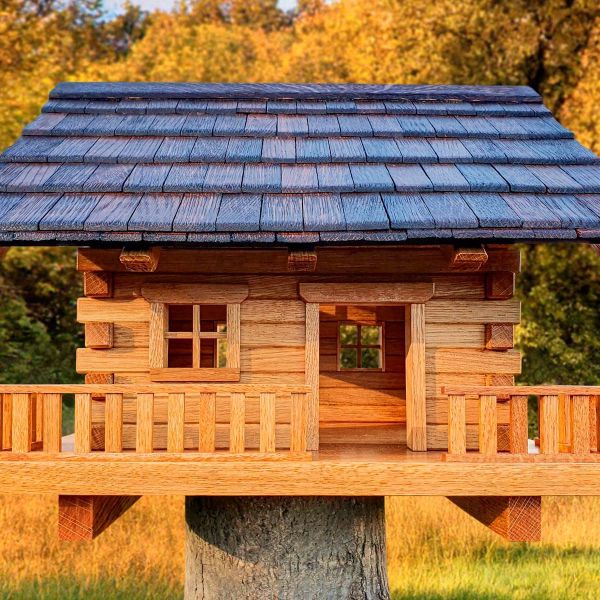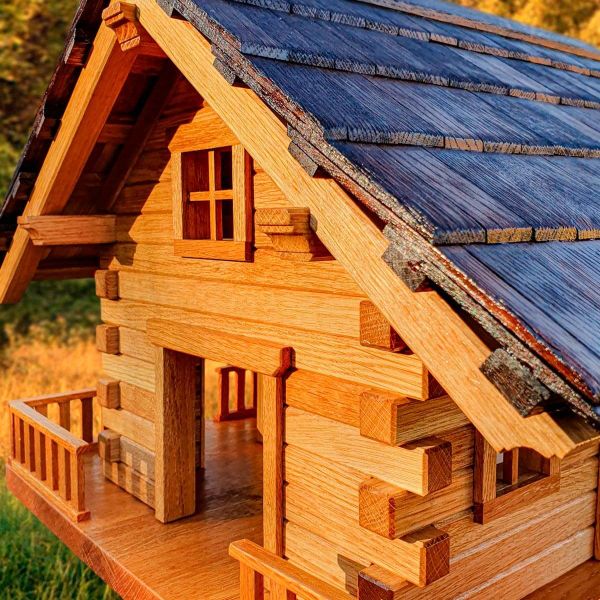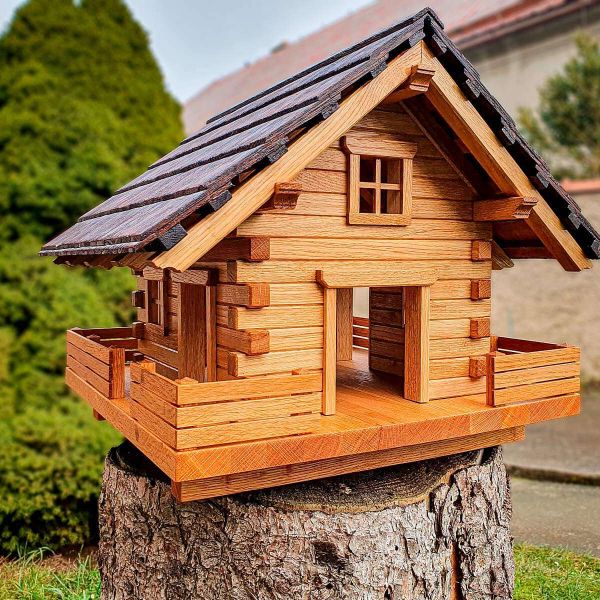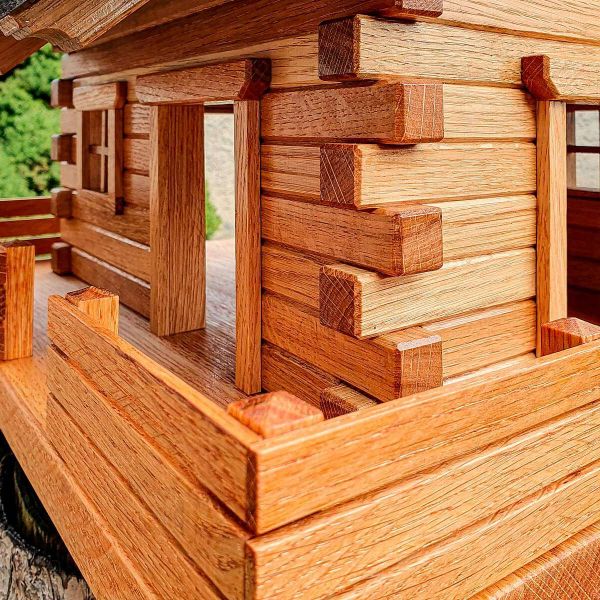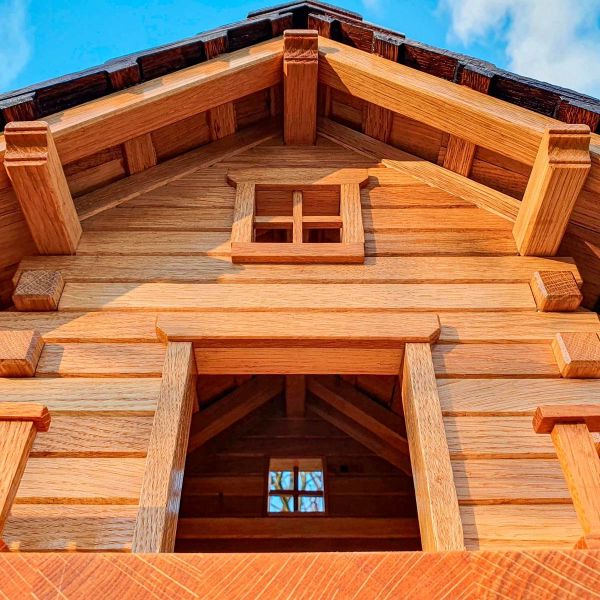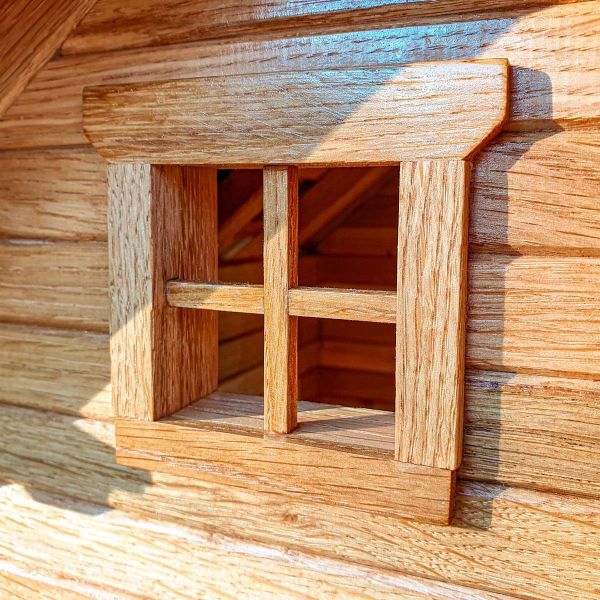Oak log cabin
with shingle roof
In harmony with nature

Durable oak wood
The stylish handmade oak bird feeders are the right choice for them. The oak wood provides strength and weather resistance, while the precision handcrafting gives each bird feeder a unique and distinctive feel. A roubená konstrukce se šindelovou střechou jenom doplňuje krásu přírodního materiálu.

Oak wood is the most resistant to weather conditions
and does not mind the alternation of wetness and dryness.
A beautiful and practical addition to the garden
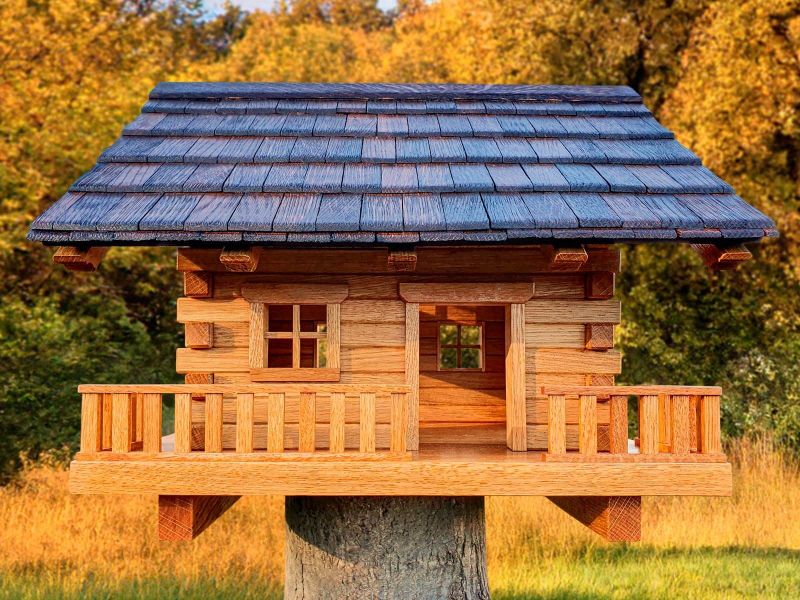
Luxury bird feeder made of oak wood
is not only a useful accessory, but also a work of art,
that will brighten up every corner of your garden.
The log consists of a total of 430 wooden parts, precisely machined and glued together with high-quality waterproof and health-safe glue and stainless steel screws. The surface of the roof shingles is scratched for a more natural look.
To increase the durability of the timber and extend its life, the entire timber frame is impregnated with several layers of air-polymerizing natural oils.
-
Dimensions:
42×51×48 cm
(height×width×length) -
Weight:
approx. 12 kg
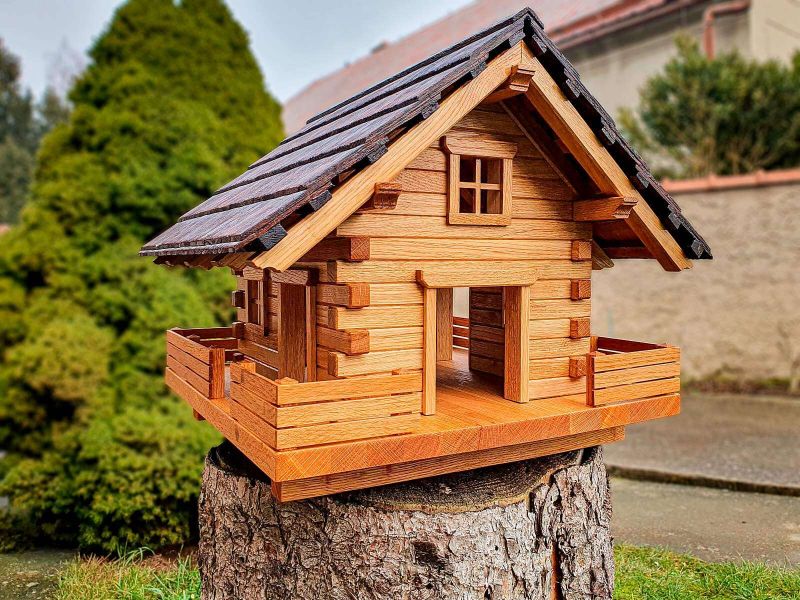
How a bird feeder is born or From tree to log cabin
-
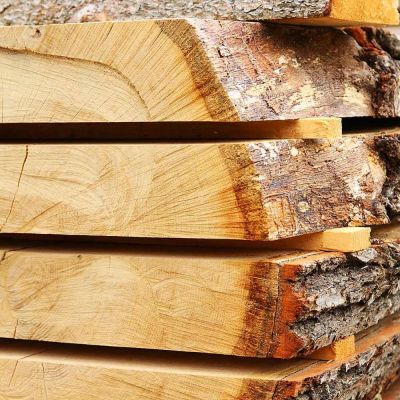
At the beginning there is a tree
The sawmill cuts planks from the tree and they are dried for a few years. -

Cutting and formatting
I cut the wrong parts from the dried planks on the table saw and then format the quality wood to the required dimensions. -
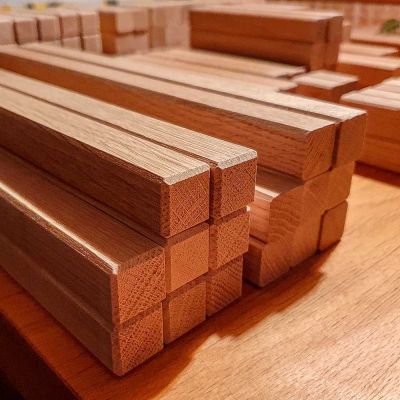
Planing and grinding
Roughly formatted parts are shaved to exact dimensions and edges. The result is 430 parts from which I then assemble the feeder. -
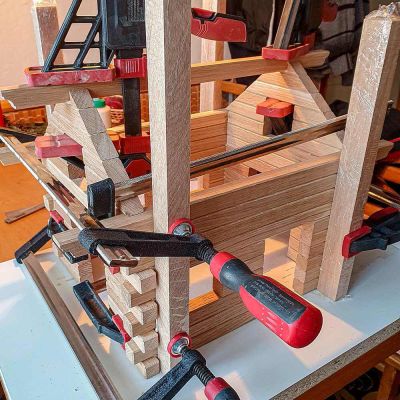
Rough construction
I glue the machined parts together and assemble the rough structure. -
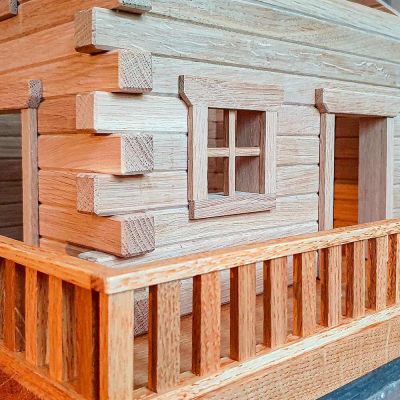
Windows, doors, fence
From mini-carpentry on the rough construction I take a break for a while to mini-joinery. -
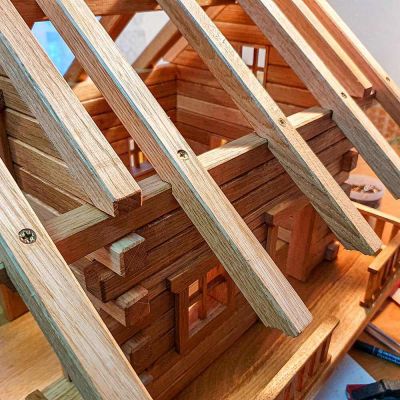
Rafters
The basis of a quality roof are rafters firmly attached to the wall. -

Roof battens
Roof battens cut at a precise angle ensure a firm attachment of shingles to the roof. -
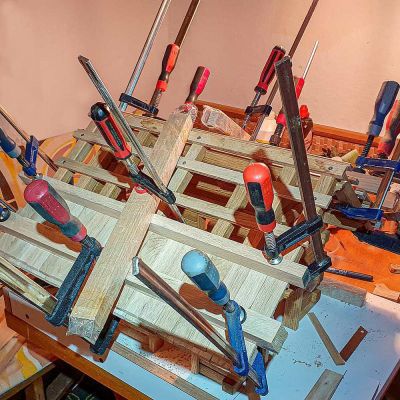
Roofing work
The final joinery is the attachment of 216 shingles and a roof ridge. -
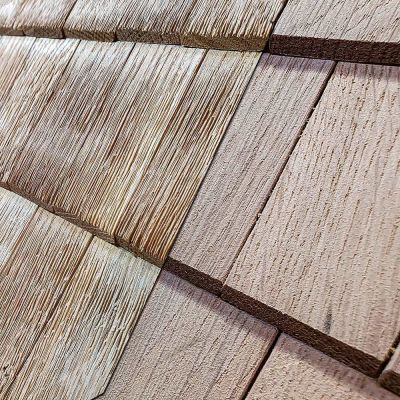
Scratching shingles
For a more natural look, I use steel and nylon brushes to scratch the shingles. You can see the difference between the surfaces in the photo. -
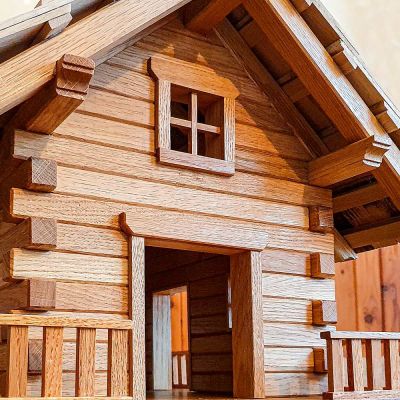
Final
The last step is to stain the roof and impregnate the entire building with several layers of natural oils.
Cleaning and maintenance
The entrances on the fronts of the timbered house have a size of 100×120 mm, so waste and droppings can be continuously swept with a broom.
For the possibility of general cleaning, the entire timber is attached to the base from below with two screws, so there is no problem to perform a complete cleaning.
Custom manufacturing
Price: 679 €
